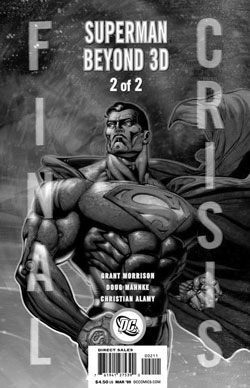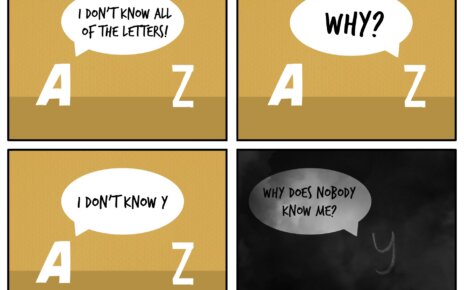Nowadays, 3-D has been and continues to make waves in movie theaters across the country as shown with last week’s new releases, Arthur Christmas, Hugo, and Immortals.
Now, while 3-D is slowly coming to home theaters with the advent of 3-D TV’s and Blu-Rays, one might be surprised to learn that comics have also taken the venture into 3-D technology.
Although not as sophisticated as RealD 3-D or IMAX 3-D by using the old red and blue shaded glasses, comics have and continue to use this unique angle to have characters and dialogue bubbles pop out of the page.
The genesis of the 3-D comic book began in the 1950’s when 3-D was first being used in movie theaters to attract audiences.
According to tvtropes.org, “The first 3-D comic book was Three Dimension Comics and starred Mighty Mouse. After that, many different comics came out, but they only lasted one or a few issues; the comics were expensive (25 cents when others were 10 cents) and sold mostly as novelties, which got old quickly. By the end of the year, the fad was dead.”
However, just because this trend ended early didn’t mean it left comic books altogether. Much like the death and return of heroes like Superman, Batman, Captain America, to name some, 3-D comics would find its way back to readers at different times.
In the 1980’s, 3-D returned to comic books via Eclipse Comics, now defunct, which experimented with 3-D by using it in certain series like “Miracleman” and “DNAgents.”
Today, comic book publishers don’t print as many 3-D adventures as movies do, but they still like to play around with this unique aspect occasionally. Although the continuation of Alan Moore and Kevin O’Neil’s “The League of Extraordinary Gentlemen: Black Dossier,” only featured selected pages that brought the 2-D artwork toward the reader, it showed how this technique is being utilized by the comic industry.
Yet, one of the more prominent 3-D comics was the two-part miniseries, “Final Crisis: Superman Beyond,” written by Grant Morrison and drawn by Doug Mahnake. Not all of the pages were in 3-D but it sure was an interesting reading experience to see Superman fly out of the pages through red/blue lenses.
The limited series featured Superman saving the world from a returning threat as “Final Crisis” loomed in the distance.
Reviewing “Final Crisis: Superman Beyond 3-D” #2 for comicbookresources.com, Chad Nevett wrote, “While [3-D] felt arbitrary at times in the first issue, it’s used much more consistently here. The Monitors’ reality comes across as a higher level of perception and being as a result of the 3D.”
Another comic book to experiment with 3-D was “Clive Barker’s Sleuth 3-D” from IDW about a man whose encounter with a diamond takes his life in a sinister direction.
Barker’s name is synonymous with his movie monster creation Pinhead from Hellraiser, but some of his other stories have been adapted as well to the comic book format such as “The Great and Secret” for IDW. However, one of the hooks of “Sleuth” was the 3-D element.
The most recent comic book publisher to try out 3-D was Image Comics with last January’s “Captain Wonder 3-D” one-shot tale. The book, written and illustrated by Brian Haberlin and Philip Tan, was about how superhero Captain Wonder
suddenly disappeared and a kid who decides to search for him.
While it is interesting to check out these rare types of comics, it is more fascinating to learn how artists create such visuals.
Habelin described the process he takes to create 3-D comic book pages to comicbookresources. com, in a separate article, by saying, “I’ve built a method using Photoshop that is totally interactive, meaning that as you’re making a page 3-D, you can actually see the effect live and see what’s better to push back or pull forward and to what degree you want to do it.”
The fact that comics like “Captain Wonder 3-D” was playing around with this technology on the comic book pages shows that even this industry is trying to find new ways to use 3-D as much as movies and television. Who knows what this technology might lead to the in the future?
While too many 3-D comics could get exhausting and lose its meaning, it would still be exciting to pick up issues or one-shots that bring these larger than life heroes right to the reader.
PHOTO COURTESY of comicvine.com




